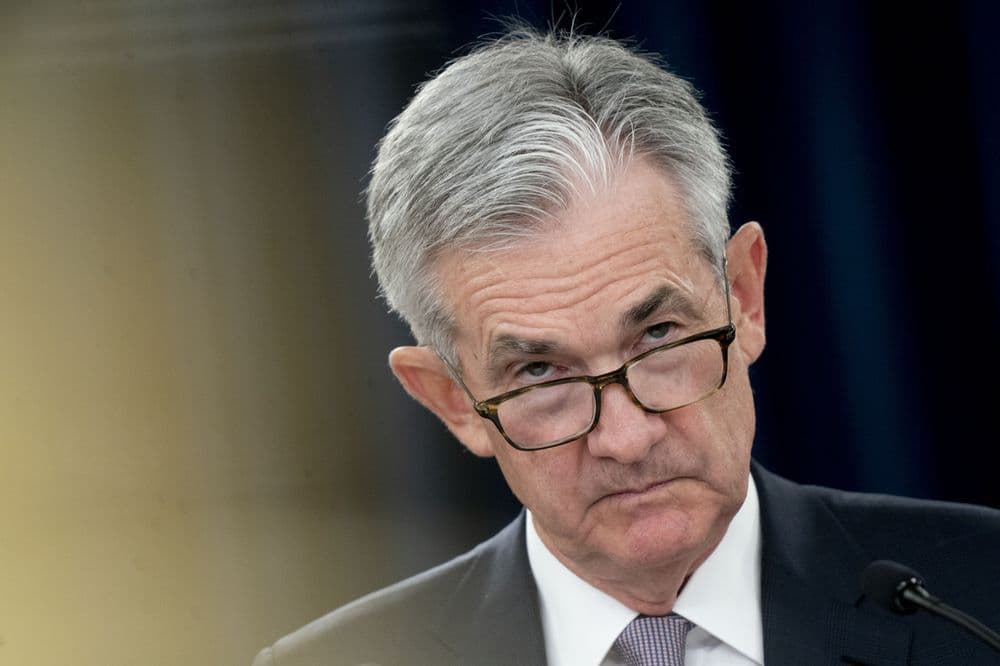
(Oct 31): Federal Reserve officials reduced interest rates by a quarter-percentage point for the third time this year and signaled a pause in further cuts unless the economic outlook changes materially.
The US Federal Open Market Committee (FOMC) altered language in its statement following the two-day meeting Wednesday, dropping its pledge to “act as appropriate to sustain the expansion,” while adding a promise to monitor data as it “assesses the appropriate path of the target range for the federal funds rate.”
“We believe monetary policy is in a good place,” Fed Chairman Jerome Powell said at a news conference following the decision. “We see the current stance of policy as likely to remain appropriate as long as incoming information about the economy remains broadly consistent with our outlook.”
As with the September statement, the FOMC cited the implications of global developments in deciding to lower the target range for the central bank’s benchmark rate to 1.5% to 1.75%. Powell also noted in the press conference that the risks associated with trade tensions and Brexit show signs of improving.
Prolonged Hold
“His comments suggest the Fed is on hold for some time until something changes their outlook,” said Jennifer Lee, a senior economist at BMO Capital Markets in Toronto. “He’s still being quite optimistic, I think, particularly about the household sector. That suggests to me the Fed is quite comfortable with what they’ve done so far.”
Ten-year Treasury yields fell to 1.77% from 1.80% earlier, stocks closed slightly higher and the US dollar gained. Traders also pared bets on a fourth consecutive rate cut in December.
Treasuries initially weakened on the US Fed’s announcement but then took heart after Powell signaled that there was a high bar to raising interest rates because inflation remains muted.
“We would need to see a really significant move up in inflation that’s persistent before we would consider raising rates to address inflation concerns,” Powell said.
While lower rates do little to combat the uncertain trade picture, unemployment has continued to drop, consumer spending has remained solid and more-affordable mortgages have revived the housing market.
“What we’ve had is an economy where the consumer is really driving growth,” Powell said. “Overall, we see the economy as having been resilient to the winds that have been blowing this year."
Hours before the decision, the Commerce Department reported the economy grew at a 1.9% annualized pace in the third quarter, exceeding estimates. Better-than-expected consumer spending was partly offset by weakness in business investment.
The Fed’s cuts have also calmed markets compared with the beginning of the year when investors grew nervous that monetary policy was too tight. Pricing in fed funds futures implies investors don’t fully expect another reduction until well into 2020.
The same cannot be said for President Donald Trump, who has repeatedly attacked the Fed. He complained on Tuesday that it “doesn’t have a clue!” and has called on Powell to slash rates to zero while tweeting favorably about negative rates applied by central banks in Europe and Japan.
Dissenting Votes
As with the past two cuts, Kansas City Fed President Esther George and Boston’s Eric Rosengren dissented, preferring to keep rates unchanged.
The FOMC didn’t release a new set of economic forecasts and rate projections at this meeting, so it’s unclear how many non- voters on the committee had also penciled in a reduction.
The statement again highlighted the essentially positive condition of the U.S. economy. With unemployment at a half-century low, officials continued to describe the labor market as “strong,” job gains as “solid” and household spending as rising at a “strong pace.”
Uncertainties Remain
At the same time, they repeated a reference to “uncertainties’’ in the economic outlook. Officials also made a minor change to say business fixed investment and exports “remain weak.” The prior statement had said that they weakened. That softness has shown up in data from the manufacturing sector this year, though factory output rose slightly in the third quarter.
Fed officials have been watching for signs that weakness in manufacturing and faltering confidence in the business sector might threaten consumer spending, particularly if the job market cools. The Labor Department will release its October employment report on Friday.